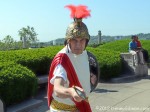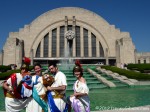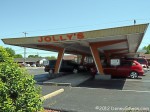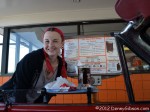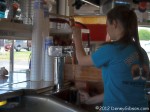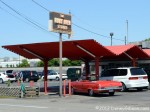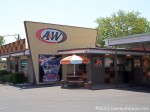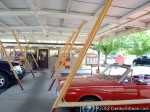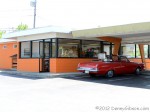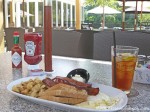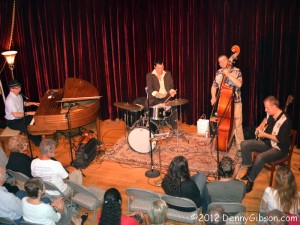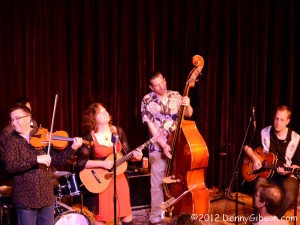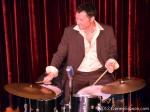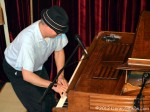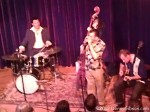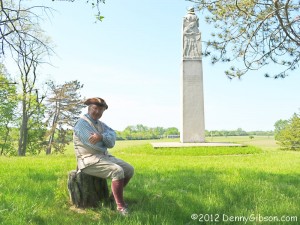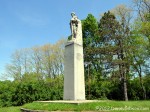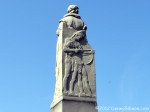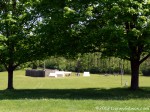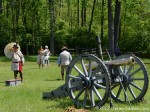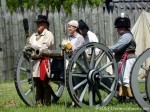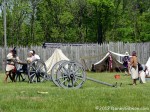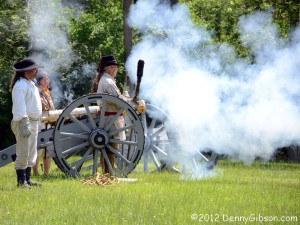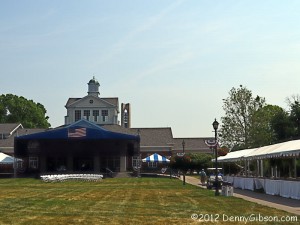 On the south side of Dayton, Ohio, there is what amounts to a small Greenfield Village. It’s now called Carillon Historical Park and is part of the Dayton History organization. Just as Henry Ford was behind the collection of historic buildings that is Greenfield Village, Dayton industrialist Edward Deeds was behind the collection here. I believe the place was actually called Deeds Park once upon a time. In fact, I didn’t realize that Deeds was not part of the official name until I started doing research to write this. At least the carillon that gives the park its name is still called the Deeds Carillon. It was built in 1942 and, at 151 feet tall, is the largest in Ohio.
On the south side of Dayton, Ohio, there is what amounts to a small Greenfield Village. It’s now called Carillon Historical Park and is part of the Dayton History organization. Just as Henry Ford was behind the collection of historic buildings that is Greenfield Village, Dayton industrialist Edward Deeds was behind the collection here. I believe the place was actually called Deeds Park once upon a time. In fact, I didn’t realize that Deeds was not part of the official name until I started doing research to write this. At least the carillon that gives the park its name is still called the Deeds Carillon. It was built in 1942 and, at 151 feet tall, is the largest in Ohio.
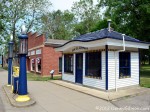
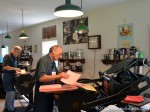 Today was the day of the Heritage Festival which meant admission was free (just pay for parking), all the buildings were open and staffed, and there were plenty of food vendors. There was also entertainment scheduled throughout the day with the Dayton Philharmonic Orchestra preceding event ending fireworks.
Today was the day of the Heritage Festival which meant admission was free (just pay for parking), all the buildings were open and staffed, and there were plenty of food vendors. There was also entertainment scheduled throughout the day with the Dayton Philharmonic Orchestra preceding event ending fireworks.

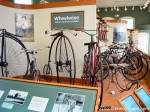 Quite a few bicycle manufacturers called Dayton home and that included the Wright Brothers. Two of the five surviving Van Cleves (the Wright’s , brand name) are in the park but are not part of this display. Both are in a building devoted to the brothers. Huffy originated in Dayton and introduced the Radio Bike in 1955. The three tube radio was built into the “tank” with batteries and antenna on the rear fender. Only a few more years separate the 1890s high-wheels in the first picture from the Radio Bike than separate the Radio Bike from today.
Quite a few bicycle manufacturers called Dayton home and that included the Wright Brothers. Two of the five surviving Van Cleves (the Wright’s , brand name) are in the park but are not part of this display. Both are in a building devoted to the brothers. Huffy originated in Dayton and introduced the Radio Bike in 1955. The three tube radio was built into the “tank” with batteries and antenna on the rear fender. Only a few more years separate the 1890s high-wheels in the first picture from the Radio Bike than separate the Radio Bike from today.
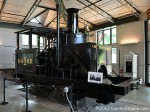
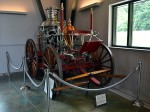 There’s some big stuff, like rail cars and buses, in the transportation building. The 1835 B & O engine is the oldest existing locomotive built in the United States. Because of the way the vertical pistons and connecting rods looked when in motion, locomotives of this type got the nickname “grasshoppers”. The horse-drawn steam-powered pumper was built in Cincinnati in 1883 and used in Sidney, Ohio, until 1916.
There’s some big stuff, like rail cars and buses, in the transportation building. The 1835 B & O engine is the oldest existing locomotive built in the United States. Because of the way the vertical pistons and connecting rods looked when in motion, locomotives of this type got the nickname “grasshoppers”. The horse-drawn steam-powered pumper was built in Cincinnati in 1883 and used in Sidney, Ohio, until 1916.
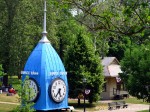 I remember this clock standing beside I-75 just south of Dayton. It marked the Reynolds and Reynolds Company headquarters and I guess I thought it always had. Nope. It started out in downtown Dayton on the Callahan Building. That building was demolished in 1978 and the clock moved to Reynolds and Reynolds. It has been patiently waiting here since 2006.
I remember this clock standing beside I-75 just south of Dayton. It marked the Reynolds and Reynolds Company headquarters and I guess I thought it always had. Nope. It started out in downtown Dayton on the Callahan Building. That building was demolished in 1978 and the clock moved to Reynolds and Reynolds. It has been patiently waiting here since 2006.
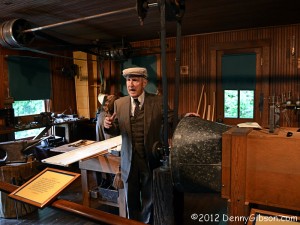 I’m not sure what this fellow’s real name is but he calls himself Wilbur
I’m not sure what this fellow’s real name is but he calls himself Wilbur
“…because I can’t grow a mustache”. He is standing in a replica of the Wright’s work shop since Henry Ford took the original to Greenfield Village at the Ford Museum. After doing a wonderful job of telling about the wind tunnel and other experiments that both preceded and followed that first flight in 1903, he tells us that there is a real airplane just down the hall that “…I’ll be flying this afternoon about 3:00.”
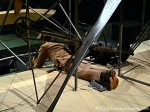
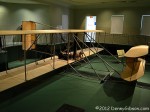 This is the plane. It is the Wright Flyer III from 1905. With the 1903 flyer, they got off of the ground more or less when they wanted but they returned the the ground when the plane “wanted” and the flight path was essentially straight. With this plane, they learned to fly where they wanted and land on their own, rather than the plane’s, schedule. When Orville gave the pieces of this plane (it’s about 80% original) to Deeds in 1948, he insisted that it be displayed in a pit so that visitors could look down on the plane and see what was involved it operating it. The pilot’s right hand works a horizontal lever that controls the rudder. The left hand works a vertical lever that controls the elevators at the front of the plane. By moving his hips from side to side, the pilot controls the twisting of the wings which the Wrights called “wing warping”. Orville died before the park opened.
This is the plane. It is the Wright Flyer III from 1905. With the 1903 flyer, they got off of the ground more or less when they wanted but they returned the the ground when the plane “wanted” and the flight path was essentially straight. With this plane, they learned to fly where they wanted and land on their own, rather than the plane’s, schedule. When Orville gave the pieces of this plane (it’s about 80% original) to Deeds in 1948, he insisted that it be displayed in a pit so that visitors could look down on the plane and see what was involved it operating it. The pilot’s right hand works a horizontal lever that controls the rudder. The left hand works a vertical lever that controls the elevators at the front of the plane. By moving his hips from side to side, the pilot controls the twisting of the wings which the Wrights called “wing warping”. Orville died before the park opened.
I didn’t make it to the fireworks or even to the Philharmonic but, as always, I very much enjoyed a visit to my favorite neighborhood historical village.

 I read somewhere that Alannah Myles recorded her 1989 hit Black Velvet in a hot un-air-conditioned room to make it feel, and therefore sound, like “Mississippi in the middle of a dry spell”. The result was something that could be described in a single word and which fit that word, sultry, in every dimension. Lisa Biales didn’t forego climate control to record Just Like Honey but she did get some help from the south and she did nail SULTRY — dead center and in capital letters.
I read somewhere that Alannah Myles recorded her 1989 hit Black Velvet in a hot un-air-conditioned room to make it feel, and therefore sound, like “Mississippi in the middle of a dry spell”. The result was something that could be described in a single word and which fit that word, sultry, in every dimension. Lisa Biales didn’t forego climate control to record Just Like Honey but she did get some help from the south and she did nail SULTRY — dead center and in capital letters.



